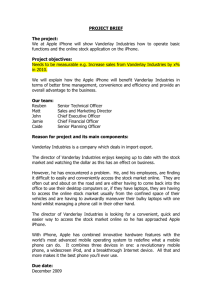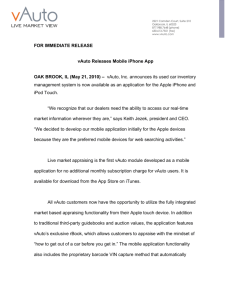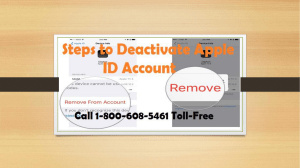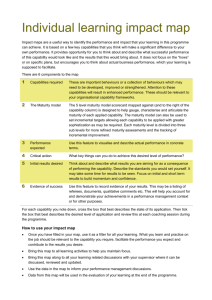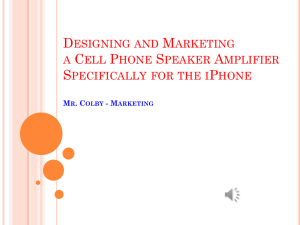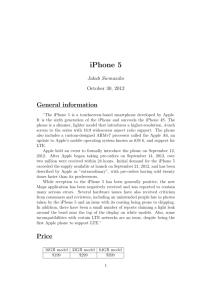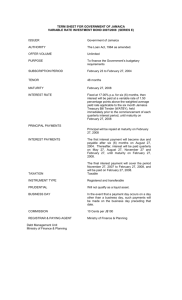Consumer Demand & Product Life Cycle
advertisement
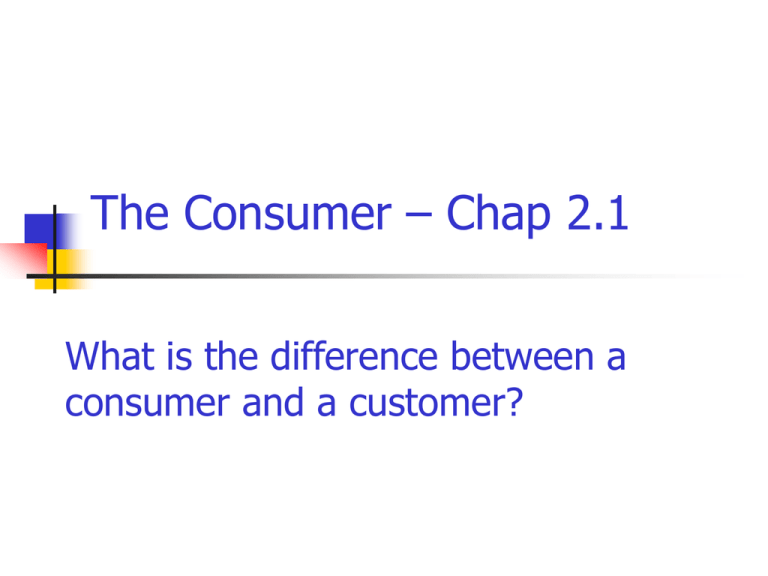
The Consumer – Chap 2.1 What is the difference between a consumer and a customer? Consumer Demand Consumer—a person who uses a product (think of the word “consume” = use) Customer—a person who purchases a product Gatekeeper—a person who purchases a product for someone that is not able to do so themselves Consumer Demand Needs—are essential to our survival Food Shelter Protection Affection from loved ones Affiliation (belonging) Consumer Demand Wants—are not necessary for survival but add pleasure and comfort to our lives Xbox 360 or PS3 7 Jeans BMW 750 or Audi R8 Louis Vuitton & Coach bags Consumer Demand Both customers and consumers have basic needs and wants In Canada & the USA, consumer demand is driven more often by what we want rather than what we need (hence the term “consumerism”) The Product Life Cycle Chapter 2.2 The Product Life Cycle This cycle describes the changes in consumer demand over time The product life cycle is based on the knowledge that no one product will be in demand forever The Product Life Cycle There are five stages in the product life cycle Introduction Stage Growth Stage Maturity Stage Decline Stage Decision Point Stage The Product Life Cycle The Product Life Cycle Introduction Stage When a product is introduced in to a market known as a product launch The most expensive stage of the five stages Products are priced very high at this stage e.g. Apple iPhone 4 (16 GB) = $659 + HST The Product Life Cycle Introduction Stage Products are bought by early adopter or trendsetters e.g. students buying Apple iPhone 4, Halo Reach or Fifa Marketers use either a push or pull strategy to sell the new product Push Strategy—marketing efforts are focused on product placement in stores Pull Strategy—marketing efforts are focused on promotion techniques The Product Life Cycle Growth Stage The product is highly visible in either daily life or in the media Manufactures of the product will advertise heavily during this stage This is the stage where the product will catch on or fail The Product Life Cycle Growth Stage There is very little competition at the beginning of the stage As the number of competitors increase market share becomes important Market Share—the company’s sales of goods or services as a percentage of the total sales for that market The Product Life Cycle Growth Stage Factors that prevent competitors from making a profit are called barriers to entry Small market size The cost of R&D Advertising expenses Factory and equipment costs Lack of distribution channels Customers in this stage are the early majority The Product Life Cycle Maturity Stage Sales in this stage increase slowly, if at all Advertising during this stage highlights the fact that the product has lasted for a long time Manufactures have recouped the major costs associated with the introduction stage The Product Life Cycle Maturity Stage Businesses use income generated by mature products to develop and launch new products Customers in this stage are called the late majority The Product Life Cycle Decline Stage A decrease in profits The manufacturer is only able to find a few new customer Customers in this stage are called laggards The Product Life Cycle Decision Point Stage During this stage the company decides whether or not to continue manufacturing the product In order to continue manufacturing a dying product, new uses for the product must be developed


